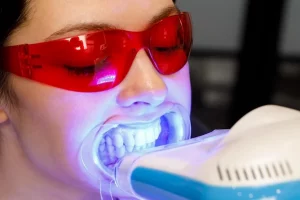If you’ve lived with missing teeth or loose dentures, you already know the daily grind—worrying about a slip mid-laugh, struggling through dinner, or feeling like your smile doesn’t quite belong to you. It’s not fun, and it’s not your fault. Traditional dentures can only do so much before they start fighting back.
Modern dentistry has moved on. Implant-supported dentures solve the problems that made old-school dentures a test of patience. They anchor to implants placed in your jaw, giving you real stability, full chewing power, and a reason to smile without second-guessing it.
Let’s unpack what they are, why they work, and what makes them worth every bit of effort.
The Problem with Loose Dentures and the Fix That Lasts
Conventional dentures were once the go-to fix for missing teeth. They filled the gap, sure, but rarely stayed put. Slipping plates, sore gums, awkward speech—it’s a familiar list of complaints.
The real kicker? Lose a tooth, and the bone underneath starts to fade away. Over time, that bone loss reshapes your face and makes dentures fit even worse.
What Implant-Supported Prostheses Actually Are?
A dental implant is a tiny titanium post placed in the jaw to replace a missing tooth root. Titanium isn’t just strong, it bonds with bone through osseointegration, creating a solid anchor that won’t budge.
Once integrated, the implant acts like a natural root, ready to hold a crown, bridge, or denture in place. It’s a long-term fix for anyone done with the short-term hassle of removable plates.
Why Implant Dentures Change the Game
The draw is simple: stability, comfort, and a face that still looks like yours.
Stability and Confidence
Implant-supported dentures don’t slide, wobble, or need glue. You can chew confidently—yes, even steak and apples—and speak without worrying about a slip. They feel more natural, and because they stay put, you stop thinking about them altogether.
Health and Longevity
Implants keep your jawbone alive. The pressure from chewing stimulates the bone, preventing it from shrinking and giving you back your natural facial contours. They’re also built to last. While the denture part might need replacing every 15–20 years, the implants themselves can last a lifetime with proper care.
Picking Your Type: Crowns, Bridges, or Dentures
Implants can carry different kinds of restorations:
- Implant-supported crowns for single teeth.
- Implant-supported bridges for a few missing teeth.
- Implant-supported dentures (or overdentures) when you’re replacing a full arch.
Fixed or Removable
- Removable overdentures snap on and off for cleaning, using small attachments to lock onto the implants. They’re great if you want easy maintenance.
- Fixed dentures, sometimes called hybrids, stay in place. You don’t remove them; your dentist does. Think of All-on-4 systems—four implants holding an entire arch steady.
The Hybrid FP-3 Explained
A hybrid prosthesis (FP-3) replaces both teeth and some gum tissue, often using pink resin for a natural look. It’s chosen when there’s major bone loss or the gums would otherwise show awkwardly under your smile.
Materials vary: metal-acrylic hybrids for durability, metal-ceramic for better aesthetics, and zirconia for those allergic to metal.
Getting There: The Process and What to Expect
You start with a full exam and imaging. The dentist checks bone density and plans implant placement. If bone height is lacking, grafting adds what’s needed.
Age doesn’t matter much here; bone health does.
The Surgery and Healing
Implants are placed, and you wait a few months for them to fuse to bone. During that time, you’ll wear a temporary denture—functional, but not attached to the implants. Healing usually takes three to six months.
When it’s time for the final fit, precision is everything. The metal framework must fit passively—any tension can lead to loose screws, fractured parts, or bone loss.
Maintenance, Risks, and Real-World Care
These restorations are tough, but not invincible. The most common hiccup? Screw loosening or fracture. Usually caused by excessive bite force, bruxism, or an imperfect fit.
Prevention 101:
- Skip hard foods like ice or uncracked nuts.
- If you grind your teeth, get a night guard—non-negotiable.
- Visit your dentist regularly for checkups and torque checks.
Other risks include peri-implantitis, an infection that affects the bone around implants, and rare prosthesis fractures.
Cleaning Tips
| Type | Daily Routine |
| Removable (Snap-on) | Clean twice a day and soak overnight in denture solution. |
| Fixed (Hybrid) | Brush like natural teeth. Use floss threaders, small brushes, or a water jet to clean under the prosthesis. |
After surgery, most patients feel fine within a week. Skip the gym for 48 hours, and if you see swelling, bleeding, or fever beyond that—call your dentist.
Takeaway
Implant-supported dentures aren’t just an upgrade—they’re a return to normal. You eat what you want, speak clearly, and stop worrying about slipping plates or pastes. It’s not just about getting teeth back; it’s about getting your confidence back too.
If you’re ready to stop settling for “good enough,” talk to a specialist who does this every day and get a plan built for you. Contact Oris Dental Clinic in Dubai for implant-supported dentures in Dubai and take the first step toward a stable, confident smile that lasts.





